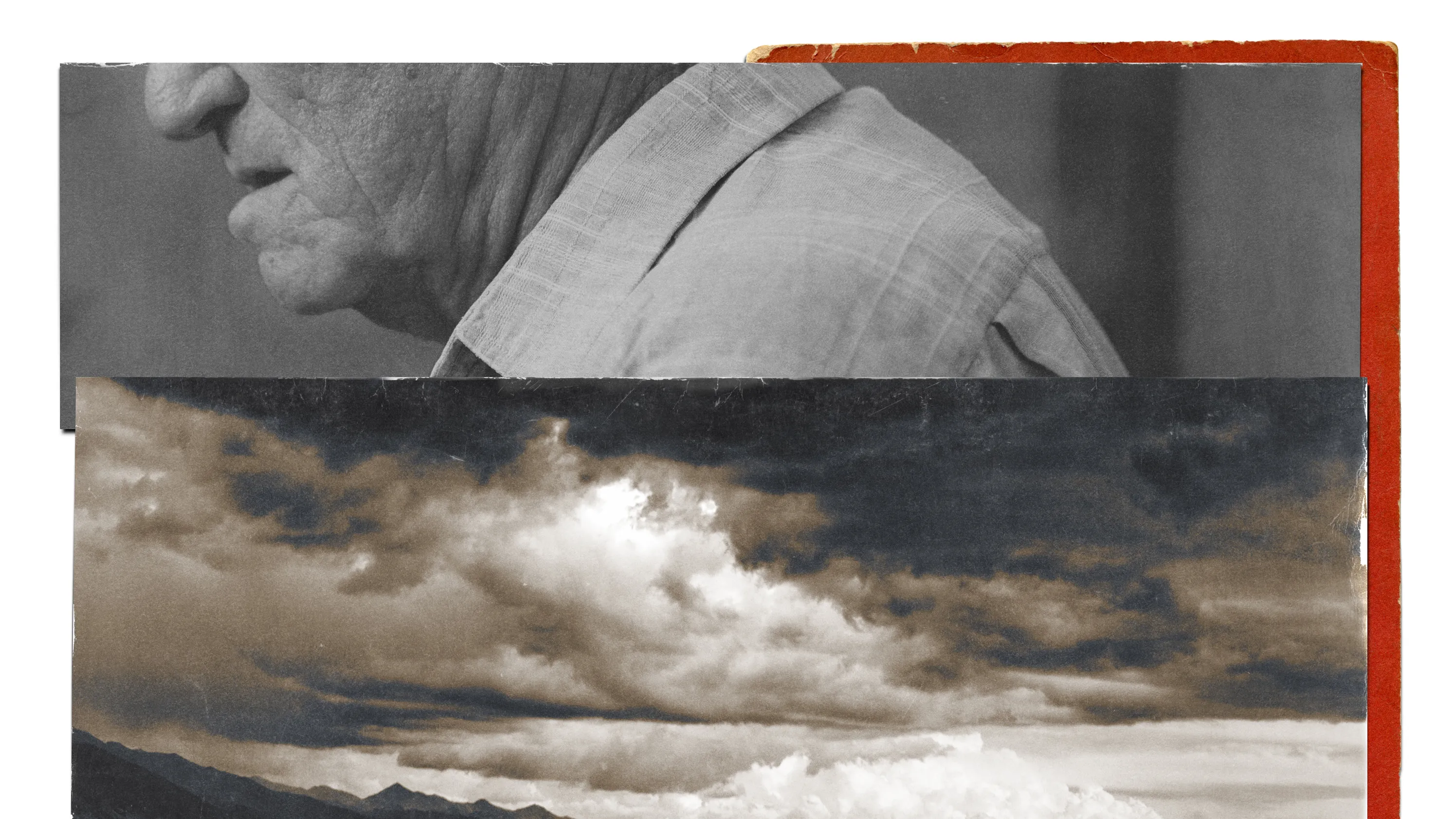By Aaron Mendelson
Copyright gq

This story was reported and co-published by The Trace, a nonprofit newsroom covering gun violence in America. Subscribe to its newsletters.
Editor’s Note: This story features extensive reporting and data about firearm suicides, including details that may disturb some readers. Please take care before proceeding. If you or someone you know is showing signs of wanting to hurt themselves or end their own life, please read The Trace’s suicide prevention resource guide. Also, dialing 988 from any phone in the US leads to the Suicide & Crisis Lifeline, offering one-on-one counseling for mental health, suicide, and substance use–related problems for anyone 24/7. Online chat is also available at 988lifeline.org.
Jeanette Evans couldn’t find her husband.
After searching for him throughout their home, she noticed his revolver was missing. “Sure enough, the bag was there,” she recalls. “But the gun was gone. And then I really knew something was wrong.” Shortly after 8 a.m., she dialed 911.
Evans and Larry Zentz met two decades earlier, as coworkers at Frontier Airlines. Zentz relocated to Colorado to settle down with Evans. The couple bought a home in 2005 in the unincorporated community of Bailey, 7,740 feet above sea level. They’d purchased an RV that Larry would pilot on road trips, with their two dogs and two cats in tow.
About a year before, Zentz received a diagnosis of squamous cell carcinoma—skin cancer. Surgery left his face scarred, and doctors lined up dozens of radiation treatments. He struggled through the cancer without talking much about it, Evans remembers. But she sensed that the scars bothered him, and the gauntlet of radiation appointments “absolutely terrified him.”
Several minutes after calling 911, Evans walked out onto their second-story deck and looked down. She screamed. Larry’s body lay next to a retaining wall. He had shot himself in the right temple. The bullet knocked his Colorado Rockies cap off his head, and left brain tissue inside the hat, a coroner’s report later said. His Taurus Tracker revolver was on the ground. Evans ran down onto the lawn and began to weep.
Zentz died on August 9, 2019. He was 72. His suicide is part of a grim trend in the United States: More and more older Americans are dying by gun suicide.
To examine the issue, The Trace and GQ analyzed detailed mortality data from the Centers for Disease Control and Prevention from 2009 to 2023. It provides a sobering look at a widespread phenomenon: We found that Americans 70 and over had the highest suicide rates of any age group, and that their rates of suicide have increased in recent years. During this period, 63,836 older Americans died by gun suicide.
Gun suicide is a greater killer of men over 70 than car crashes, our analysis showed. And if older men are in trouble, older white men are especially in trouble. They die by gun suicide at the highest rate—a rate more than triple that of Black and Latino men of the same age, and 19 times the rate of women 70 and over.
Across the country, these rates are particularly high in rural areas, our analysis showed. In Park County, Colorado, where Zentz died, 51 per 100,000 residents over 70 died by gun suicide. That’s in the top 1% of US counties, and more than quadruple the rate in nearby Denver County.
Suicide in later life often stays hidden. Many isolated older Americans have no obituary, memorial, or funeral. For those who do, the cause of death often goes unmentioned. But doctors and researchers are sounding the alarm. “The epidemiology is very clear that, here in the United States, older age is associated with increased rates of suicide,” says Yeates Conwell, MD, a psychiatrist at the University of Rochester School of Medicine.
No single factor drives the high rates, researchers say. But severe illness, pain, financial pressures, isolation, a lack of mental health care, cognitive impairment, and the availability of firearms all play a role. “It’s not one thing,” Conwell says.
Gun laws also factor in. The US has a substantially higher suicide rate for older adults than neighboring Mexico or Canada, countries with stricter gun laws.
Those who study the issue are troubled by the rising rates of suicide among older Americans, who make up a growing share of the US population. “These combined factors suggest that absolute numbers of completed suicides among older adults will increase dramatically in coming decades,” Conwell and other researchers wrote in 2019.
“I see these high suicide numbers, in part, as a failure of our society to deal with death well,” says Emmy Betz, MD, MPH, an emergency room physician and public health researcher at the University of Colorado School of Medicine. “We’ve got to stop assuming that it’s okay for for older adults to die by suicide.”
In June 2023, Robert McBroom began hospice care at his home in a remote corner of Park County, Colorado, after his skin cancer metastasized. His wife, Debra, had died the previous year. During his hospice intake, he said he felt very depressed, and that he planned to get rid of his guns.
McBroom’s neighbor LeAnn Manning took care of him and was his closest contact. “He was all about nature, so he would always try and tell you what things were,” Manning remembers. He pointed out plants, flowers, birds, trees, and journaled about the weather. Notes he and Debra had penned to each other filled the house.
But the loss of Debra, his inability to spend time in nature, and financial concerns over medical care seemed to weigh on McBroom. Manning says he was upset that she was leaving to spend time with family in Texas.
On September 8, 2023, Manning says that she and a hospice nurse were talking outside McBroom’s bedroom. They heard a loud sound, like a balloon popping, and went in.
“I saw him on the bed with a hole in his forehead,” Manning says. McBroom was 75.
Two years later, Manning still works to process the event. “He was just ready to go because he knew it wasn’t going to get any better. And we think that the cancer had gotten into his brain,” she says.
Specific interventions to help people like McBroom are challenging to design due to a lack of research. One 2021 study into the risk of firearm suicide among the terminally ill concluded that our knowledge of the subject is “strikingly limited.” Nearly three-quarters of those 75-plus who died by gun suicide had physical health issues, a 2023 study found.
We reviewed autopsy and medical examiner reports from suicides in 15 US counties. They frequently cited terminal illness as a factor. “A lot of our suicide in the elderly is definitely health-related,” says Park County coroner David Kintz Jr., who investigated the deaths of McBroom and Zentz.
Gun suicide does not kill nearly as many older Americans as heart disease or cancer. But it kills more men 70 and over than car crashes. Yet physical health is only part of the equation. Older Americans benefit from social connections, several sources stressed, and mental health needs to be part of the conversation.
Betz, the suicide expert and ER doctor, says depression and suicidality in older adults are often missed, or ignored. There’s an “ageist approach to it, that we just write it off,” she says.
Providers have opportunities to intervene. Eighty percent of older adults who die by suicide see a physician in the three months before their death. Discussing difficulties sleeping or with appetite can act as a starting point for discussing mental health, says Amanda Krisher, associate director at the National Council on Aging. “I think about it as we’re coming in from the side door, rather than the front door,” she says.
Betz treated one older patient for a finger injury, who mentioned during a screening that he was losing his home and feeling depressed. That opened a side door to counseling for him through the loss.
She encourages people to talk to aging relatives about giving up guns, akin to conversations about giving up the car keys. A University of Colorado School of Medicine group released a toolkit for older adults to inventory their guns, determine when to give them up or transfer them, and to whom.
Many terminally ill older adults may not be aware of hospice and other options for end of life care, Betz adds. Suicides among the terminally ill tend to provoke conversations about the lack of alternative options like physician-assisted suicide, says Laura Prater, an assistant professor at The Ohio State University. “Why are we more willing to let folks kill themselves with a firearm than choose to more peacefully end their lives with family members by their side?” she asked.
A Colorado law allows doctors to prescribe self-administered lethal medication to patients with less than six months to live. In 2023, the state health agency reported that the medication had been dispensed to 294 patients. (In Canada, medically assisted deaths accounted for nearly 5% of all deaths in 2023; the median age of those who died was 78, and the overwhelming majority were terminally ill.) But little research exists on any effects these laws may have on gun suicides, Prater says.
Groups like the American Foundation for Suicide Prevention say spreading messages about seeking help can play a role in reducing suicides. James McLaughlin runs the community paramedicine program at the Ute Pass Regional Health Service District in Colorado, which covers parts of Park County. The agency installed LED boards on the back of some SUVs, which flash messages about resilience and seeking care in bright blue lights. “FEELING SUICIDAL? ASK ME FOR HELP,” one says. Another repeats the 988 suicide prevention hotline over and over.
His paramedics respond to calls with an eye on a patient’s overall condition. Staffers keep gun locks in their vehicles and, if they believe a person is a risk to themself, raise the prospect of temporarily limiting access to firearms. “This is a public health crisis,” McLaughlin says.
Like most Americans over 70 who die by suicide, Larry Zentz and Robert McBroom were white men. Race, sex, ethnicity, and geography are all critical factors in gun suicide rates among Americans 70 and over, CDC data shows. But the problem is especially acute for older white men, who die by gun suicide at a rate of 34.5 per 100,000—more than triple the rate for Black or Latino men of the same age. That’s also 15 times higher than the rate for white women of the same age.
From his office in a former auto body shop in Woodland Park, Colorado, McLaughlin says his agency’s data shows older men slipping through the cracks. Those men may have grown up in settings where conversations about mental health were taboo, but guns were widespread. Pew surveys have consistently shown gun ownership is higher in rural areas, among men, and for white Americans.
“Men have a lot on their shoulders,” says McLaughlin. “And in this Western culture, especially, we’re taught, ‘Pick yourself up by the bootstraps, put everybody first.’ And then you’re not expected to falter or fail in any way.”
Park County’s 17,739 residents are 53% male, 87% white, and have a median age of 52—all higher than Colorado as a whole, according to recent census data. Independence and isolation draw people to areas like Park County, but those same factors can become deadly as the challenges of aging mount. “It becomes much harder to age in place when you’re in a rural, geographically isolated area than if you’re in downtown central Denver,” McLaughlin says.
Nationally, big cities have the lowest rates of suicides in the 70-plus population, while rural areas have the highest, according to The Trace and GQ’s analysis.
Officials in Park County point to the difficulties in receiving health care that residents face. “We’re basically 100 miles from anywhere,” says Park County commissioner Dave Wissel, who previously served as the county’s assessor for 38 years. “We have no assisted living. We have no long-term care. We have limited hospice coverage.”
Senior groups assist some older adults with transportation to medical care, but upkeep of housing and rising property taxes after a boom in home values during COVID have added stress. Geographic and social isolation can also take their toll in later life.
Park County Sheriff Tom McGraw responded to the 911 call from Jeanette Evans. It was one among many. “It’s gotten to a point with, up here, it’s no surprise,” he says. “We’re getting used to it. We are used to it.”
In Idaho, Mike Uhlorn used a shotgun.
“He maybe didn’t know how to tell us that things were getting to be too much for him,” Uhlorn’s sister Barb Clark says. “I think my brother was in a lot of pain.”
The crisis of suicides among older adults is inextricably linked with guns. Older Americans use a gun in a suicide attempt significantly more often than younger people. And guns are the most lethal method of attempting suicide.
Those stark realities underpin the Gun Shop Project, which places suicide prevention information in stores, firing ranges, and elsewhere. It began in New Hampshire a couple years after three customers in a single week purchased guns from Riley’s Sport Shop that they later used to kill themselves. The effort, typically a collaboration between gun retailers, suicide prevention advocates, and public health workers, has spread to several states.
“Gun Owners, You Can Help,” reads a poster near the entrance of Bristlecone Shooting, Training & Retail Center in Lakewood, Colorado. Information about risk factors, statistics about guns and suicide, and the phone number of a crisis support line encourage customers to take action. “Putting time and distance between a suicidal person and a gun helps keep them safe.”
Jacquelyn Clark owns the store, which participates in Colorado’s Gun Shop Project. “This message, I feel, needs to come from within the firearm community,” Clark says. At her shop, she trains staff to look for warning signs in customers, including lack of eye contact, apparent mental health or substance issues, or concerning questions—like asking about buying bullets individually. “I’m sure we lose business because of it. I know we do,” Clark says. Her clerks punch in a UPC code when they turn a customer away, something that happens a couple of times per month.
The store also offers on-site lockers where customers can drop off firearms, for any reason. “By offering these voluntary options, gun owners can prevent the state, the government, whoever, from getting involved in what they’re doing with their firearms,” Clark says. Informing older customers about accessories like lock boxes and cable locks plays a role, she says—many grew up with different ideas about responsible gun ownership.
Gun manufacturers have also waded into the cause. The industry’s trade group, the National Shooting Sports Foundation, launched a suicide awareness initiative with the American Foundation for Suicide Prevention in 2016. The NSSF’s May summit devoted time to the issue, with an emphasis on normalizing conversations about suicide and safe storage—the practice of storing guns locked, unloaded, and away from ammunition. (A 2023 Trace story revealed the NSSF-AFSP partnership contained an agreement to “act in the best interests of the other,” potentially limiting AFSP advocacy; at the time, an AFSP staffer said that the language called for transparency and did “not inhibit the action of either party.”)
But the messages aren’t reaching every gun buyer. A survey of 54 Colorado stores that participated in the Gun Shop Project in 2021 found that fewer than half were “engaging in practices and behaviors to prevent suicide.” Only 14% had provided assistance with secure firearm storage to a customer in crisis or displaying warning signs in the previous year.
Warning signs also need to be detected by staff without a professional psychology or social work background. And such conversations can be uncomfortable, particularly in areas where gun ownership is part of the local identity. Bristlecone has received one-star reviews online over the store’s suicide prevention policies. “That really hurts small business,” Clark says.
Within the US, increased gun ownership is associated with greater firearm suicides—though not with other types of suicides. And states with more firearms restrictions have fewer suicides by gun. “We can’t just talk about the why. We have to talk about the how,” says Erin Ivie, who directs the suicide prevention group SpeakUp ReachOut.
Five states have passed laws allowing residents to ban themselves from buying guns. Colorado recently joined that group, and is working to launch its program. “This is a way for people to protect themselves from doing harm to themselves or others,” says state Sen. Cathy Kipp, who introduced the bill. It was signed by Gov. Jared Polis in June.
LeAnn Manning and her husband considered moving to Park County full time. That was before Robert McBroom’s suicide in his home, which he left to Manning. “After that, I’ve never felt quite comfortable in the house,” Manning says.
First responders and researchers say the act and its gory aftermath can create new and lasting burdens for loved ones. “Suicide, and particularly firearm suicide, is pretty traumatizing for folks that are left behind,” says Prater.
It also denies a family the opportunity to provide care and support for a relative at the end of their life. “I’ve never had a family member say, ‘Oh, thank God Bob was so noble, and he went out here and he did it that way,’” says McLaughlin. “I have seen hurt, confusion, anger, sadness, fear—complete destruction for the family.”
“I can imagine that facing a terminal diagnosis or the challenges of advanced age can be extremely scary and extremely tough, and none of us was ever meant to do it alone,” he says. “And while it might be easier for that person in that moment to make that decision, it does not make it easier on everyone else.”
In Bailey, Jeanette Evans has spent six years reflecting on her husband Larry Zentz’s suicide. On a Tuesday morning in her living room, she sipped coffee and remembered her spontaneous marriage to Larry at the Park County courthouse. Outside the living room window, snow began to fall. Larry, typically stoic, used to point out the moonrise through the east-facing window. “All the little things you miss. It’s not big things. It’s looking out here at the fog, and it’s watching the moon come up,” Evans says. “All the wonderful things that he doesn’t get to do anymore.”
After his death, she sought out therapy and local support groups. Eye movement desensitization and reprocessing therapy helped her begin to understand his suicide. Friends who volunteered with her at a thrift shop came by with food. Neighbors checked in, and so did Park County Sheriff McGraw.
Twelve other older people have died by gun suicide here since 2009.
“This is a county that has a lot of guns, and I feel like people should be more open about suicide, and the fact that guns are available,” Evans says. After Zentz’s death, she got rid of his guns. She is the daughter of a state trooper and has no issues with gun ownership. She just hopes people store them safely.
Evans, 82, recently drove to Cañon City to pick up a Cavalier King Charles Spaniel puppy. The dog, Pumpkin, barked from the other room as the snow picked up. The stairs in Evans’s two-level home have become more challenging for her in recent years. So has the distance from a grocery store. She plans to leave the home she shared with Larry and move closer to Denver.
Evans hopes telling her husband’s story will help others confront the issue head on. “I just am open about it. That’s why my husband died, and I’m going to tell people,” she says. “I want it to be something that’s not hidden away. You know, we did hide suicide years ago. We shouldn’t do that.”
HOW WE DID THIS
Using the most recent mortality data from the CDC, which is current through 2023, The Trace and GQ calculated per capita gun suicide rates in the 70 and older population for every US county.
A timeframe of 15 years surfaced geographic areas that would be omitted from looking at one, five, or even ten years of data, because the CDC requires suppression to protect the privacy of people in any subgroup with fewer than 10 deaths.
The same data helped determine rates among different demographics, including race, ethnicity and sex.
Classifications from the National Center for Health Statistics guided labeling of geographies as urban, rural, etc.— a method used in past reporting by The Trace.
Over 25 interviews were conducted, in person and over the phone, with researchers, advocates, health professionals, elected officials, and people whose lives have been upended by gun suicide.



